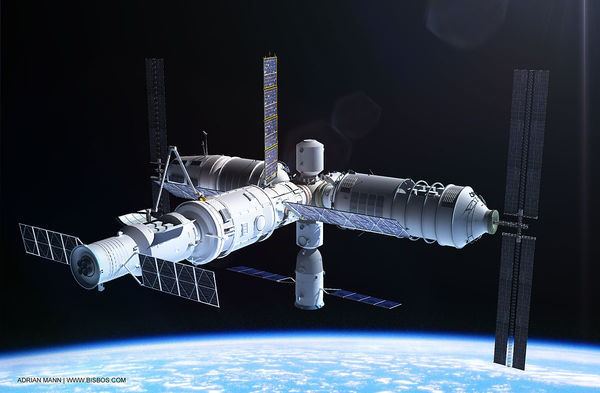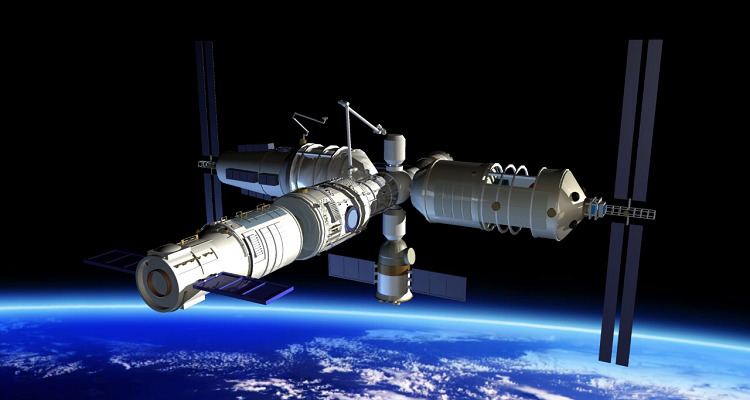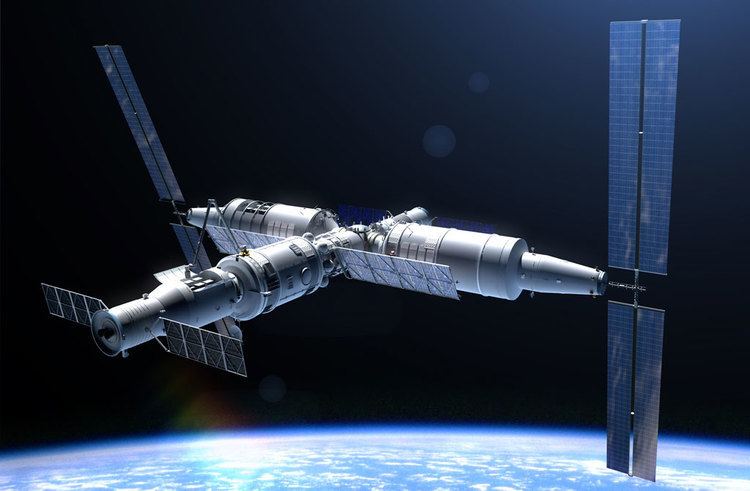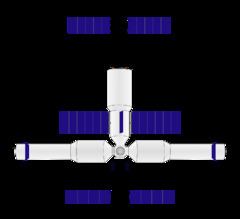Crew 3 Diameter 4.2 meters (14 ft) Mass 22,000 kg | Length 18.1 meters (59 ft) Launch date 2022 | |
 | ||
Manufacturer China National Space Administration Similar Tiangong program, Kosmos 557, Chinese large modular s, Tiangong‑1, Skylab B | ||
Tiangong-3 (Chinese: 天宫三号; pinyin: Tiāngōng sānhào; literally: "Heavenly Palace 3") will be a Chinese space station module, part of the Tiangong space station program. The China National Space Agency was originally expected to launch Tiangong-3 around 2015, following the launch of the Tiangong-2 laboratory module originally planned for 2013. As of September 2014, it is expected to launch in 2022. Tiangong-3's design will form the basis of Chinese large modular space station, which is expected to launch in the 2020s.
Contents

Development

In 2008, the China Manned Space Engineering Office published a brief description of Tiangong-2 and Tiangong-3, indicating that several manned spaceships would be launched in the late 2010s to dock with Tiangong-3. The first Tiangong module, Tiangong-1, was launched in September 2011, and docked with the unmanned Shenzhou 8 spacecraft in November 2011, marking China's first orbital docking.
Specifications

Tiangong-3's 22-metric-ton core module will be around 18.1 metres (59 ft) long and will have a maximum diameter of 4.2 metres (14 ft). It is expected to provide:

Structure and assembly

Tiangong-3 is a 'third generation' or modular space station project. Other examples of modular station projects include the Soviet/Russian Mir, the International Space Station (ISS) and the planned Russian OPSEK. The 'monolithic' first-generation space stations, such as the Soviet Salyut 1, Salyut 3, Salyut 4 and Salyut 5 and NASA's Skylab stations, were not designed for resupply, possessing only one docking port. Second-generation station projects, such as Soviet Salyut 6, Salyut 7 and Tiangong-2, feature a second docking port, allowing for resupply and multiple crewed missions. Modular stations allow new modules to be added or removed from the existing structure over time, saving considerable costs and allowing greater flexibility.

Additional modules will dock to the axial port of Tiangong-3's core module. Using a mechanical arm, similar in function to the Lyappa arm on the Mir space station, modules will then be moved to the radial ports of the docking node.
Future modular space station
Tiangong-3's design will form the basis of a larger, multi-module space station, which China plans to launch in the 2020–2022 timeframe. When complete, the station will have a total mass of approximately 60,000 kilograms (130,000 lb), and will support three astronauts for long-term habitation. The space station will have a design lifetime of up to ten years, and its components and service craft will be largely based on previous Tiangong modules. Its primary components will include:
In 2011, Wang Wenbao, the director of the China Manned Space Engineering Office, asked the public to submit suggestions for names and symbols to adorn the space station and its cargo ship. He stated that "the crewed space program should have a more vivid symbol and that the future space station should carry a resounding and encouraging name", insisting that "the public should be involved in the names and symbols as this major project will enhance national prestige, and strengthen the national sense of cohesion and pride".
